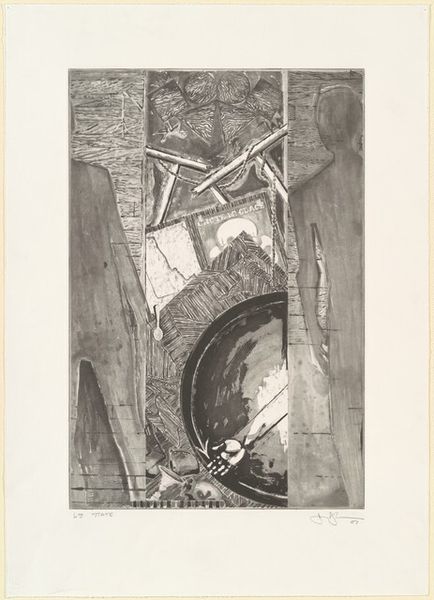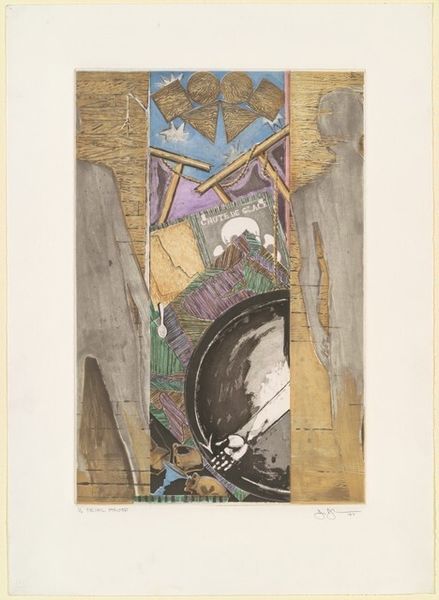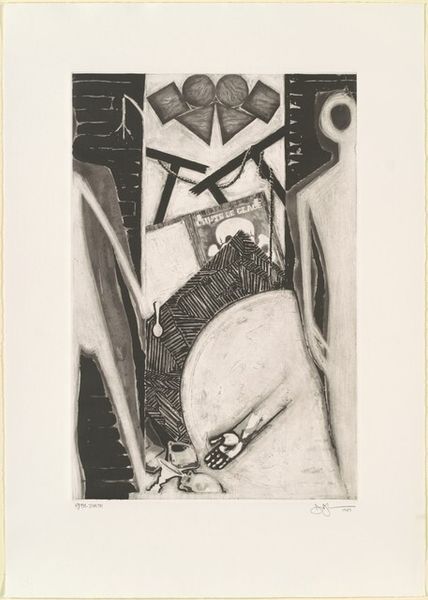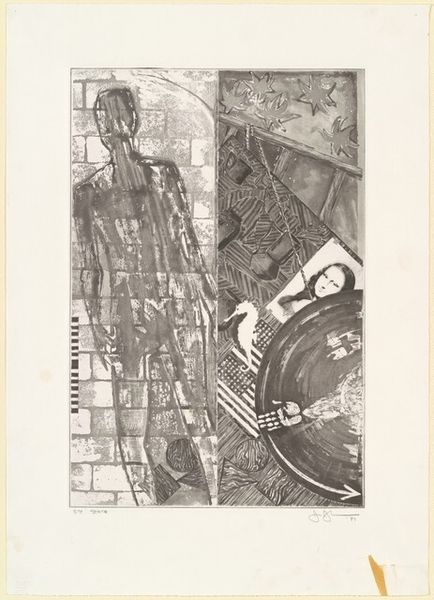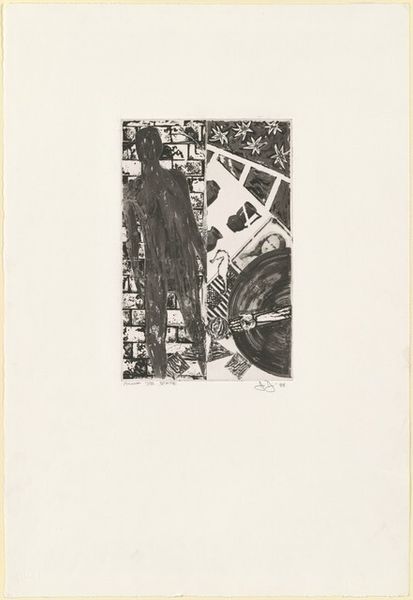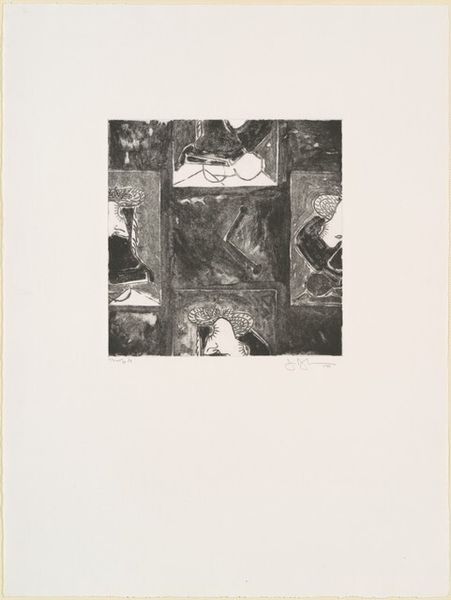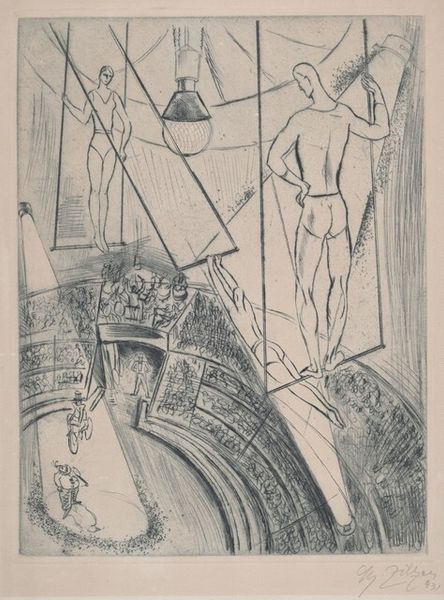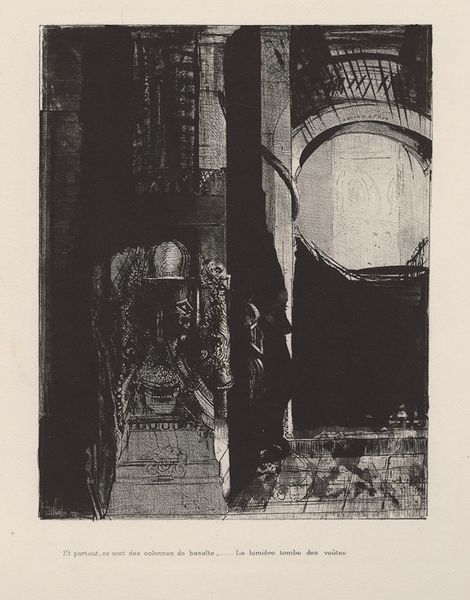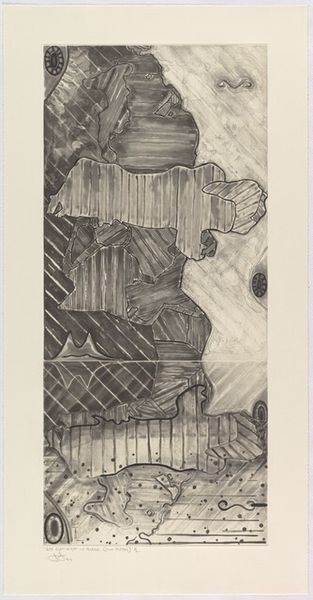![The Seasons (Fall) [7th state] by Jasper Johns](/_next/image?url=https%3A%2F%2Fd2w8kbdekdi1gv.cloudfront.net%2FeyJidWNrZXQiOiAiYXJ0ZXJhLWltYWdlcy1idWNrZXQiLCAia2V5IjogImFydHdvcmtzLzQ0OTNlZDI1LTI2OTAtNDlhMy1hZjFmLTExY2JkNjZlMjNhMC80NDkzZWQyNS0yNjkwLTQ5YTMtYWYxZi0xMWNiZDY2ZTIzYTBfZnVsbC5qcGciLCAiZWRpdHMiOiB7InJlc2l6ZSI6IHsid2lkdGgiOiAxOTIwLCAiaGVpZ2h0IjogMTkyMCwgImZpdCI6ICJpbnNpZGUifX19&w=1080&q=75)
mixed-media, print, etching
#
mixed-media
#
contemporary
#
neo-dada
# print
#
etching
#
neo-dada
#
abstraction
Dimensions: plate: 48.9 x 32.7 cm (19 1/4 x 12 7/8 in.) sheet: 67.31 x 48.9 cm (26 1/2 x 19 1/4 in.)
Copyright: National Gallery of Art: CC0 1.0
Editor: So, this is Jasper Johns' "The Seasons (Fall)," from 1987. It's a mixed-media print, mostly etching, I think. It’s a really complex composition... kind of melancholic and autumnal, actually, given the title. It's filled with these shadowy shapes, making me wonder what to focus on. What do you see in this piece, what jumps out? Curator: It hums with the quiet ache of letting go, doesn't it? Johns, he's not just depicting fall, but the fading of the self. Look at those fragmented forms – a figure almost fading on the right, objects seemingly remembered but not quite grasped. The skull and bones at the base echo memento mori. Is that "Champs de Glace" in the background? Do you think these disparate images come together to express a moment in the artist's life or maybe humanity more generally? Editor: Memento mori, yes, definitely get that vibe. "Champs de Glace"—ice skating... Maybe it is autobiographical fragments from Johns' life? It definitely has that emotional feel of memory; hazy but impactful. Curator: Precisely! The beauty of Johns, though, is that he gives us these personal hints while keeping it elusive. Look at the use of crosshatching; the textures suggest a sense of decay, of things wearing away. Each of the four prints in "The Seasons" represents a different season and perhaps, a phase of life. What does the fragmented nature say to you, of the art reflecting life, or memory, falling apart and fading away? Editor: The fragmentation makes the feeling palpable. It stops it from becoming saccharine; its stark depiction of memory and reflection keeps things very honest. It's thought-provoking that what we consider to be solid parts of ourselves—like memories—are actually always decaying. Curator: Exactly! And Johns uses that fragmentation to pull us into that space between memory and reality, inviting us to consider our own fleeting moments. He offers an interesting paradox of creating the image of decay via very careful, lasting, print-making techniques. Food for thought. Editor: I think so too. Seeing it that way brings a whole new layer of appreciation. It's so much more than just "Fall"—it’s an encapsulation of a moment in time, an impression of memory.
Comments
No comments
Be the first to comment and join the conversation on the ultimate creative platform.
